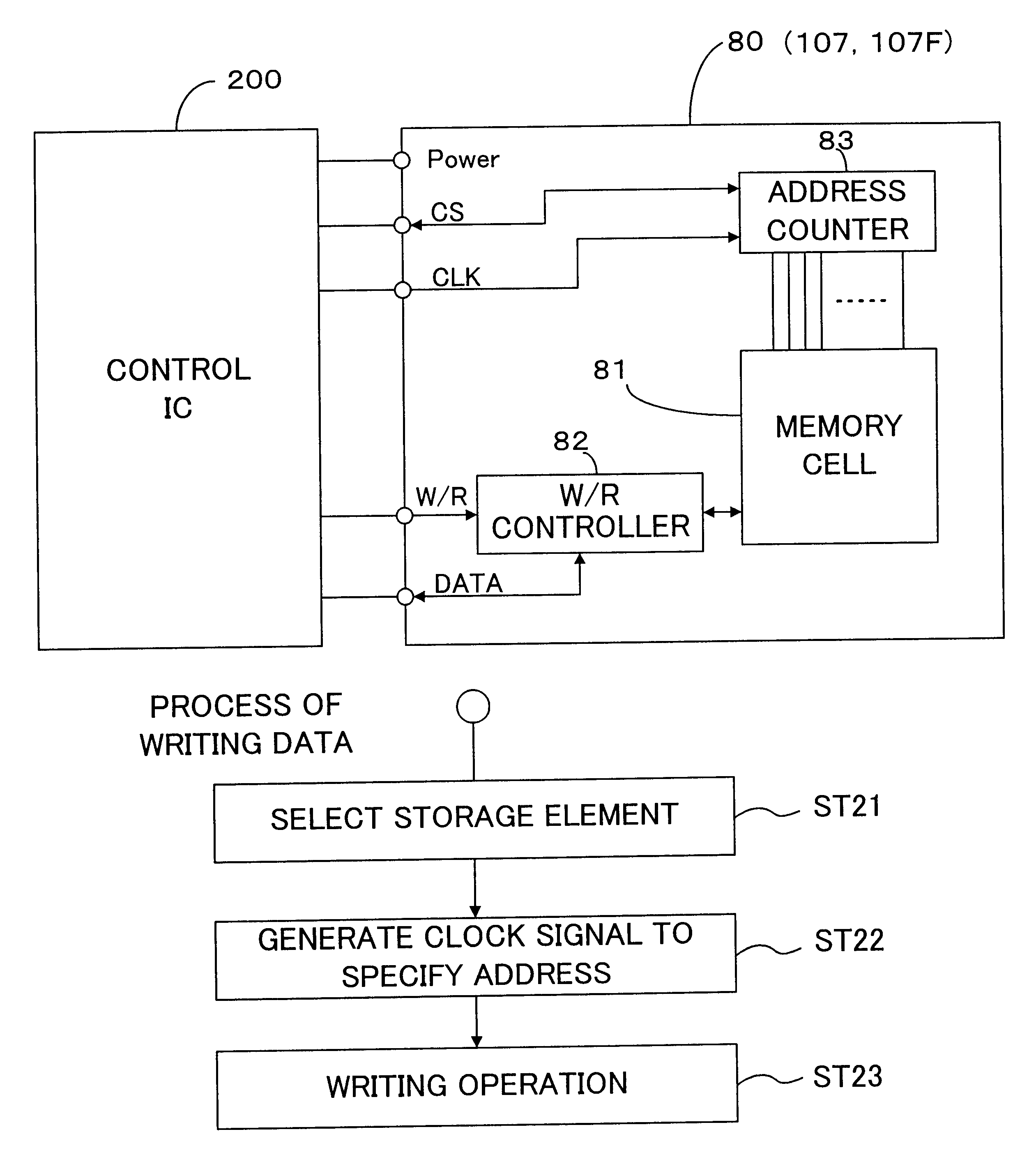Printer and ink cartridge attached thereto
a technology of ink cartridges and printers, applied in the field of printers, can solve the problems of large size, inability to apply ink cartridges, inability to manufacture ink cartridges, etc., and achieve the effect of increasing the manufacturing cost of cartridges
- Summary
- Abstract
- Description
- Claims
- Application Information
AI Technical Summary
Benefits of technology
Problems solved by technology
Method used
Image
Examples
Embodiment Construction
In the arrangement of the embodiment discussed above, the printer 1 stores the information relating to the remaining quantities of inks in different formats of addressing in the EEPROM 90 and in the storage elements 80 of the ink cartridges 107K and 107F. Memories of adequate specifications are thus respectively applicable for the EEPROM 90 and the storage elements 80, based on the requirements of the storage capacity, the speed of writing and reading operations, and the number of signal lines. This effectively reduces the size of the ink cartridges 107K and 107F and attains the resource saving effect. The EEPROM of the serial access type is used for each storage element 80. This decreases the required number of signal lines in the storage element 80 and reduces the volume occupied by the signal lines, thereby reducing the size of the ink cartridges 107K and 107F. The control IC 200 mounted on the carriage 101 carries out the conversion of the format of addressing (8 bits, parallel)...
PUM
 Login to View More
Login to View More Abstract
Description
Claims
Application Information
 Login to View More
Login to View More - R&D
- Intellectual Property
- Life Sciences
- Materials
- Tech Scout
- Unparalleled Data Quality
- Higher Quality Content
- 60% Fewer Hallucinations
Browse by: Latest US Patents, China's latest patents, Technical Efficacy Thesaurus, Application Domain, Technology Topic, Popular Technical Reports.
© 2025 PatSnap. All rights reserved.Legal|Privacy policy|Modern Slavery Act Transparency Statement|Sitemap|About US| Contact US: help@patsnap.com



